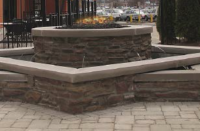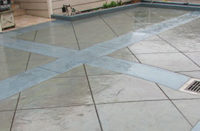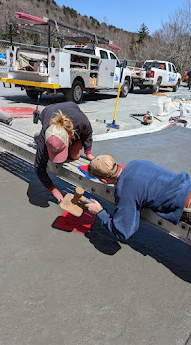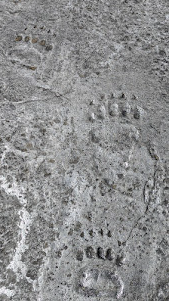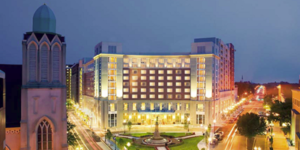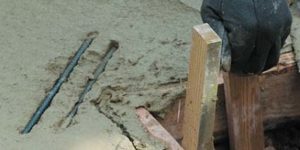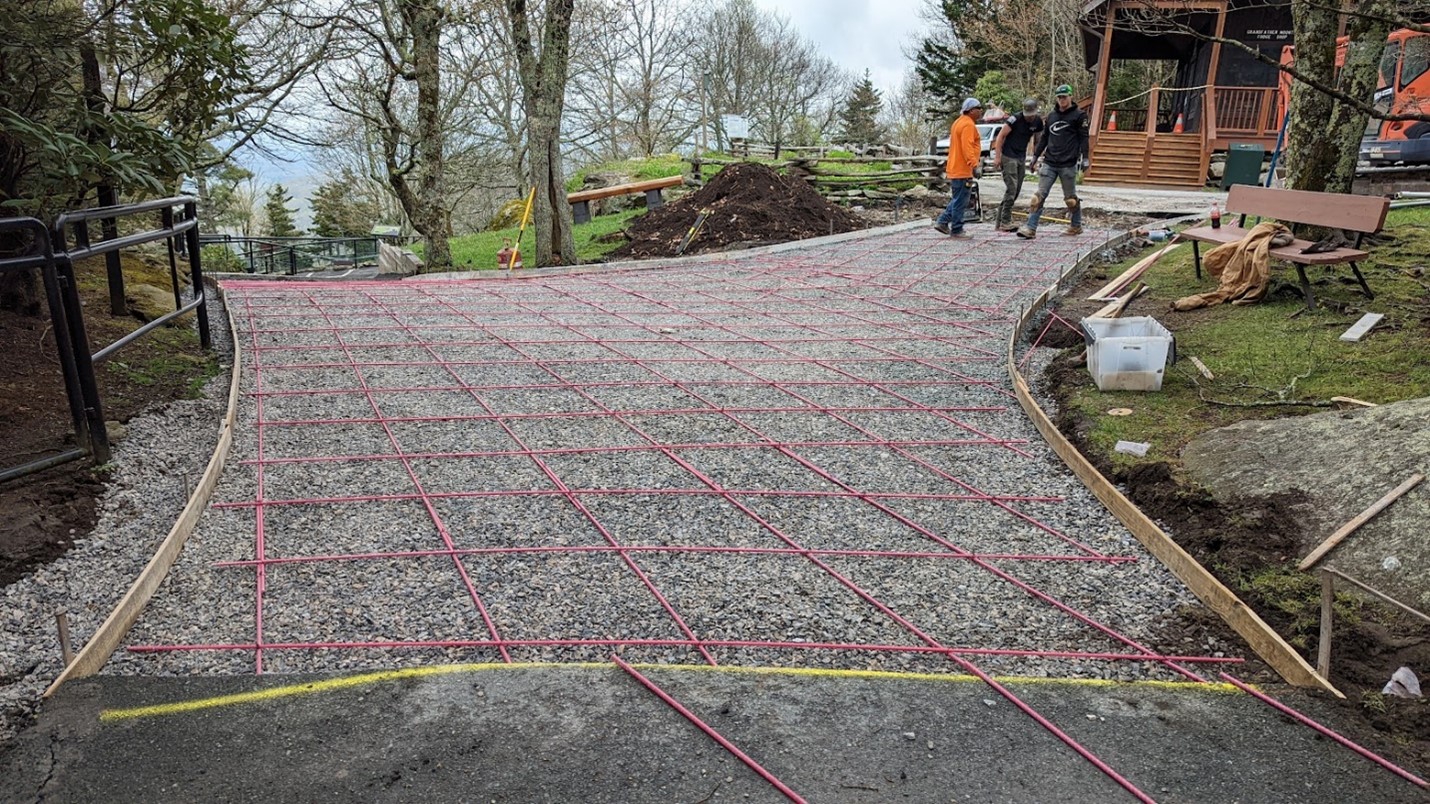
To call Carolina Bomanite’s Wilson Nature Center project a towering mountain to climb might just be an understatement.
For starters, there’s the terrain – a steep climb up one of the highest peaks in the Southern Appalachians – Grandfather Mountain in the Blue Ridge range of western North Carolina.
Then there’s the weather. It might be a sunny and warm spring morning down at the base of the mountain, but blustery, cold and maybe even snowy high up on the mountainside before the day is out.
“Grandfather Mountain has some of the most extreme and quick-changing weather on the east coast.” Thus reads a description provided by the Wilson Center for Nature Discovery. This is the impressive natural-history educational facility that sits high on the side of the mountain. Temperatures at the summit are usually 10 to 15 degrees cooler than the foothills below, and the site also gets frequent blasts of high winds.
For Carolina Bomanite, this environment, plus a daunting timetable, made for a challenge as steep as the side of the granite monolith of Grandfather Mountain.
Carolina Bomanite, headed by owner John Fletcher, teamed with Landscape Architect Ron Cutlip and Grandfather Mountain Stewardship Foundation to build expanded walkway and plaza elements at the Wilson Center site. The mountain complex, built and operated by the Grandfather Mountain Foundation, also includes the Nature Discovery facility, the landmark Mile High Swinging Bridge, hiking trails, and Wildlife Habitats where native animal species can be seen in their natural surroundings.
“Working at a property that has such a rich history to so many visitors humbles a person when they drive up the mountain,” Fletcher says of the project’s spectacular setting. “When passionate people all direct their attention to the character of a project, it really shows. From our installation crews to the staff and vendor suppliers we utilized for this project, everyone has a story to tell about the mountain.”
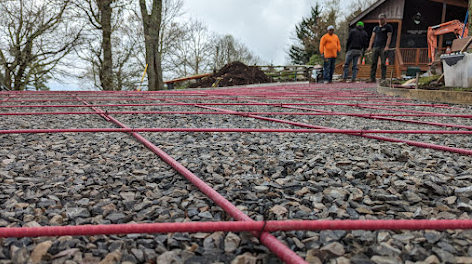
Carolina Bomanite amd landscape architect Cutlip have teamed up on several projects over the past 10-plus years, and Fletcher says he and Cutlip enjoy a “unique relationship that allows us both to direct our expertise in a positive direction on every project we’ve completed together.”
“Ron’s vision and my construction knowledge allow us both to add to creativity and provide sustainability to the installation.”
That said, these aren’t your basic, functional walkway paths and plazas. The creative team of Carolina Bomanite and Ron Cutlip sought to forge a bedrock connection to the mountain and the surrounding environment. The concrete for the walkway surfaces was integrally colored using a gray shade evocative of the ancient rock of Grandfather Mountain itself, looming high above. The surface also was given a subtle textured profile reflective of the mountain’s natural stone, and added hand-applied secondary coloring to impart a look that the real thing might exhibit after, oh, 1.2 billion years or so? That’s the age of the ancient rock outcrop of the mountain peak.
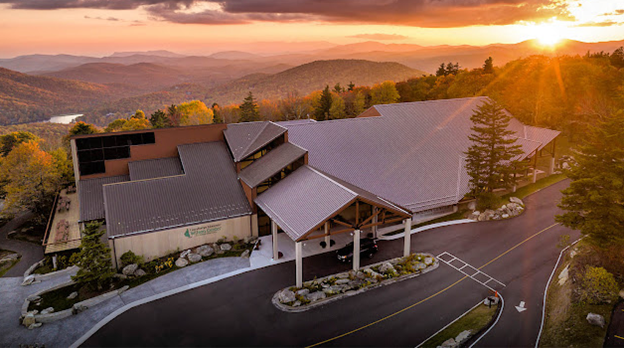
But the Carolina Bomanite artisans weren’t done after giving the geologic treatment to the freshly placed and colored concrete. Working with naturalists on staff with Grandfather Mountain, the crew added a variety of animal prints to the new concrete surface, including those of bear, deer, turkey, and other wildlife native to the region. The details mattered; the designers and artisans made sure the spacing and location of animal paw or claw prints accurately depicted the gait of the relevant species, telling a story of the animals’ journeys on the mountainside.
In addition to the horizontal concrete surfaces, designer Cutlip and Carolina Bomanite extended the natural-world theme to the plaza areas’ new cast-in-place seat walls, incorporating boulders and other large rocks into the walls, and placing native vegetation in the crevices and ledges in the cliff-like wall constructions.
“Walls can be hard enough to build,” Fletcher says, “and then add the curvilinear geometry along with strategically placed boulders hand-selected by the architect, and it makes for a challenging installation.” They completed the look by retrieving more rocks from the mountain and using them as capstones for the wall.
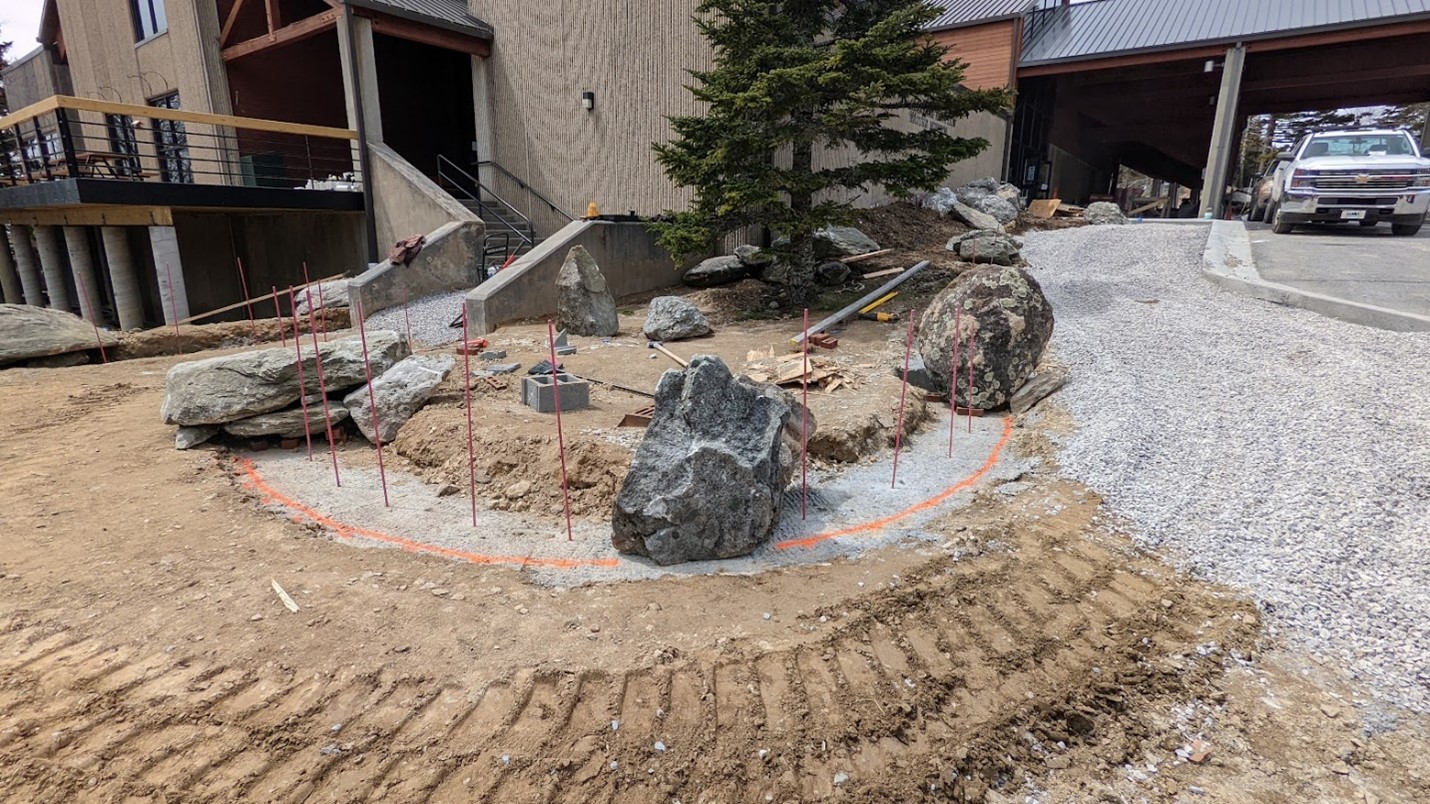
Not Just Another Project
For Fletcher and Carolina Bomanite, this wasn’t just another project. It came with a mandate to respect and even revere a unique environment and spectacular setting. And one visited by thousands annually – schoolchildren, organizations, and anyone looking for a trip to a storied part of the natural world.
“Every child in this part of the country goes there at some point,” Cutlip says. Grandfather Mountain Stewardship Foundation, Cutlip, and by extension Carolina Bomanite, shared a vision of “wanting to add to the learning experience.”
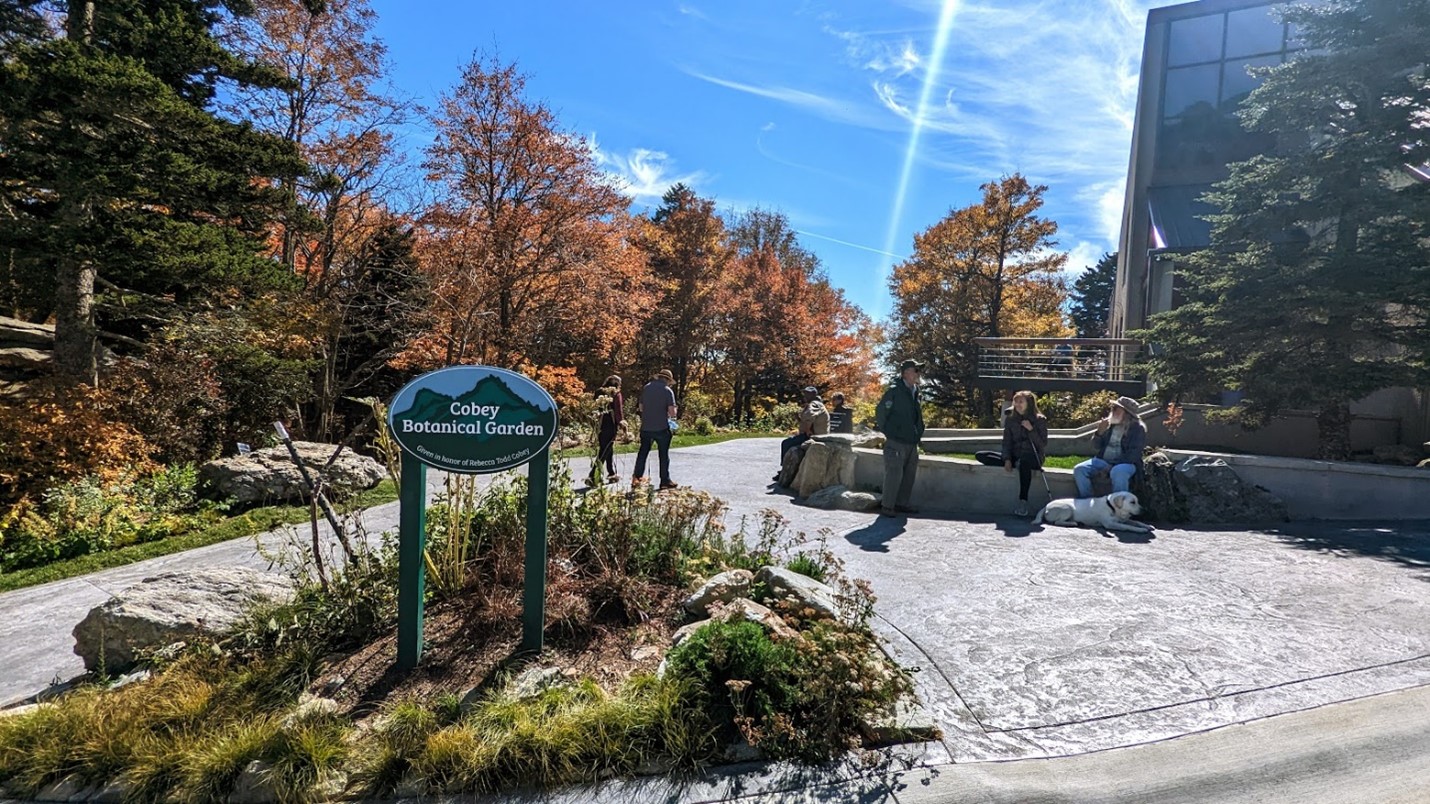
Carolina Bomanite had weeks, not months, to complete the project. This included the start of grading to the last touches with animal prints. It also included all the planting of vegetation on the seat walls. They started concrete placement in April. This was because March was still too cold for concrete pours at the 3,000-foot-plus altitude of the construction site. They needed to wrap everything up in May. This is when the busy season arrives at the mountain. Business comes in the form of visits by groups from schools and other organizations.
“It can snow a foot in April,” Fletcher says.
Grading for the walkways and plaza areas included the addition of soil in low-lying portions of the site. What followed was placement of 6 to 8 inches of wash stone as a base for the concrete. This is more generous than usual in light of the site’s demanding service environment. Winter temperatures can hit below-zero levels. Winds can also reach record-high speeds.
Enter Owens Corning’s PINKBAR+, for an early test case of the product in a real-world setting. Above and beyond a typical real-world setting, no doubt.
“It was the first time we used the product at this elevation. And, in these conditions” in a client project, Fletcher says. Carolina Bomanite’s first experience with the rebar was in the construction of a new company office and warehouse in 2020. Sold on the results, the company has used the fiberglass rebar in most if its recent projects.
“It was a huge time saver,” Fletcher says, noting the rebar’s light weight and ease of cutting. As for performance, corrosion is taken out of the equation with the fiberglass composition, clearly a major asset. “Whenever a product is easier to use, it makes the job go faster.”
The project is going on more than a year and a half since project completion. At this time, there are no reports of cracking or other problems that have surfaced, Fletcher says.
“PINKBAR+ was the perfect solution for this opportunity and Carolina Bomanite was the perfect building to make it happen. They were the first team to install the product in concrete. They continue to be great pioneers of the trade and craft” added Casey Ingle. Ingle is the Director of Strategic Marketing at Owens Corning.
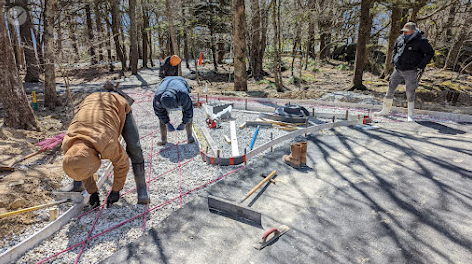
That’s Simple Enough
Handling and installation of the fiberglass rebar doesn’t differ greatly from conventional steel rebar, with “a few exceptions,” Ingle says. “We designed the product to match the same experience contractors have everyday”
You can do the cutting in the field with either a fine-blade saw, grinder and carborundum or diamond blade. It is not a requirement that you seal the ends of fiberglass bars. Chair spacing should ensure adequate concrete cover. Tying is the same as conventional rebar, with wire based on contractor preference.
Other installation notes from Owens Corning:
- Concrete cover should be greater than the diameter of two bars, to prevent thermal reflective cracking.
- Forming in the field is possible, for large-radius curves.
The company’s technical literature states that the fiberglass rebar’s tensile strength exceeds that of steel rebar. They also describe the product as up to seven times lighter than steel rebar.
Needless to say, the absence of both corrosion and rust as a threat or concern gets top billing by the manufacturer.
For further information about Owens Corning, visit them online at www.owenscorning.com.
